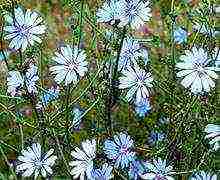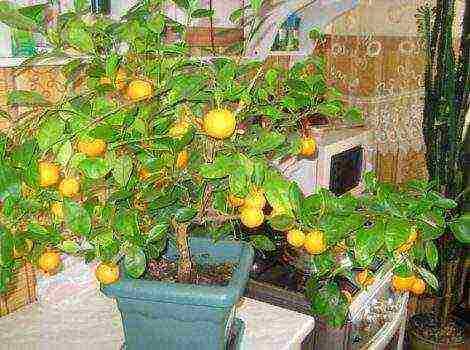Content
- 1 What does a mango look like
- 2 Common varieties
- 3 How to plant a mango correctly
- 4 Mango Care Tips
- 5 Culture propagation methods
- 6 Grafting mango
- 7 Diseases, pests and control of them
- 8 Preparing mango seeds for planting
- 9 Planting a sprouted mango seed
- 10 Mango tree care at home
- 11 Video: how to grow a mango tree at home
- 12 How to grow mango from seed at home?
- 13 How to plant a mango correctly?
- 14 How to grow mango from seed?
- 15 Mango care at home
- 16 Conclusion
- 17 Outcome
Almost everyone has probably tried mango. This fruit is very popular in the countries of Southeast Asia. In Russia, the climate does not allow it to grow in open ground, but at home it is quite possible. Even a tree that does not bear fruit looks very attractive, decorating the interior.
What does a mango look like
In nature, mango (Mangifera indica) is a powerful evergreen tree that grows up to 40 m in height. The crown is wide, spreading, 10–15 m in diameter. His homeland is the tropics of Southeast Asia. It is especially common in India, Thailand, Vietnam, Myanmar. Now extensive plantations exist in the southern states of the United States, Mexico, the Caribbean and Central America, Australia. Humanity has been growing mangoes for over 4,000 years. In his homeland he is called "the fruit of the gods", "the great fruit", as well as the "Asian apple". According to legend, mango is a wedding gift from God Shiva to his future wife Sati.
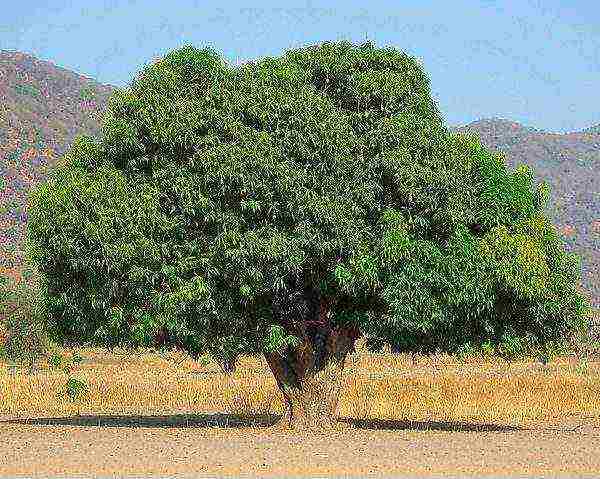
In nature, a mango tree can grow up to 40 m in height.
The mango tree grows fast enough, but you have to wait 10-15 years for fruiting. But his productive period is 250-300 years.
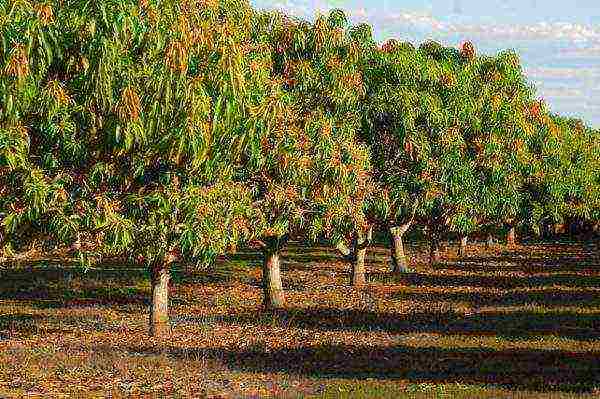
Mango plantations exist in many countries with tropical climates
It is not possible to grow mango outdoors in Russia. The climate and weather conditions are radically different from those of the plant. But amateur flower growers have successfully “domesticated” the culture and even manage to get the harvest in “captivity”. In such conditions, the height of the tree is usually limited to 1.5–2 m.
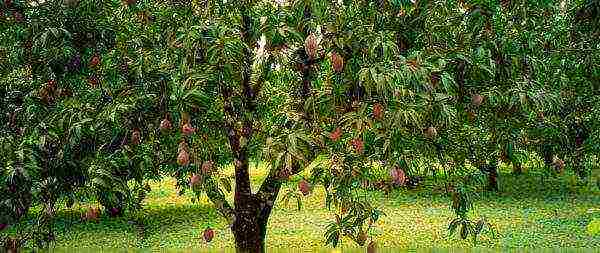
Mango tree can bear fruit for 300 years
Mango leaves are long and narrow, in the shape of a lancet. The front side is painted in a bright green color and glossy shines. The underside is lighter and matte. Young leaves have a yellowish, pinkish or reddish tint. At first they look very sluggish, lifeless. Do not be surprised, for a plant this is the norm, and not some kind of exotic disease. In their homeland they are called so - "scarf leaves", hinting that they look like clothes hung out to dry.
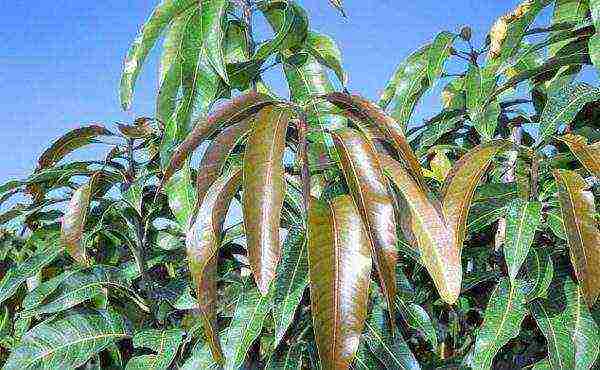
Young mango leaves are colored in different shades of reddish-yellow and pinkish - this is the norm for a plant.
The sap of the leaves is poisonous. It can cause allergies, rashes, and redness of the skin. Therefore, any work on pruning mangoes is carried out only with gloves. The place for the pot with the plant must be chosen so that it is out of the reach of children and pets.
Mango blooms in early spring.The inflorescences consist of many small yellowish, pinkish or pale red flowers and are in the form of a brush or panicle. They are very long, up to 30–40 cm. Each has a minimum of several hundred flowers, often the number reaches a thousand. They emit a pleasant scent, a bit like the scent of lilies.

Mango blooms very profusely, in one inflorescence there can be up to a thousand flowers
Video: what a mango tree looks like
Description of fruits
It takes 4-6 months for the fruit to ripen. The appearance of the fruit depends on the variety. There are also small mangoes, slightly larger than a plum, and "champions" weighing more than 2 kg. The average weight of the fruit is 200-400 g, the length varies from 5 to 22 cm. The skin is colored in different colors - from greenish and lime to dark scarlet and reddish brown, including all shades of yellow. Combinations of all three colors are not uncommon. The skin is dense, matte, smooth to the touch, covered with a waxy coating. In ripe fruits, when pressed, it is served, but does not sink deeply.
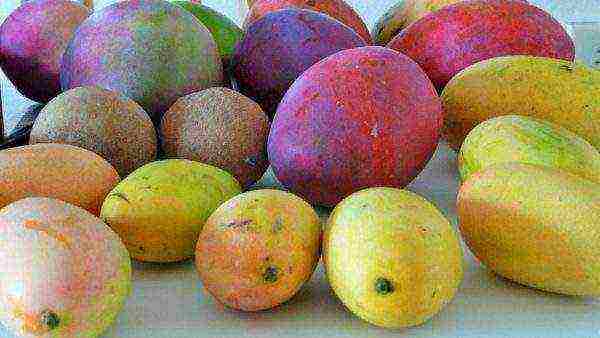
The appearance and size of mango fruit depends on the plant variety.
The pulp is bright, saffron, very soft, juicy and sweet, the taste is somewhat reminiscent of a mixture of apricot, peach, pineapple and melon, with a spicy aroma in which hints of lemon and roses are guessed. Each fruit contains one large seed, hard and ribbed to the touch.
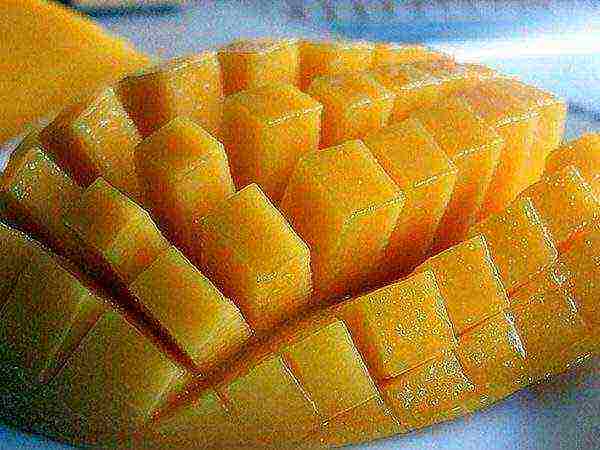
Mango pulp is very juicy and unusually tasty, has a unique aroma
The smell of "natural" mango fruits is not very pleasant. The smell is associated with mold, rot, even rotten meat. Many people even develop allergies to this "aroma". This is due to the fact that in nature, bats most often pollinate mangoes. They also carry his seeds. But fortunately, the vast majority of modern varieties bred by breeders are devoid of this unpleasant feature.
Useful properties of mango
Mango is not only very tasty, but also healthy. Fruits are valued for their high content of essential amino acids, fiber, unsaturated fatty acids, flavonoids, pectin, vitamins B, A, D and E, as well as for their low calorie content. 100 g contains only 66 kcal, so mango can be a pleasant addition to any diet.
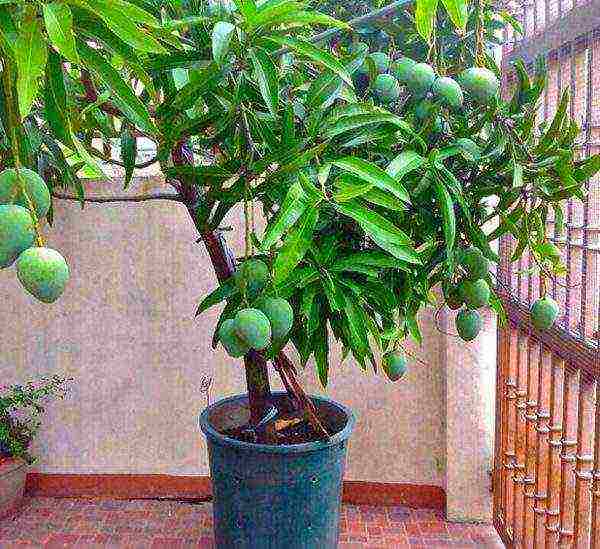
Even small, home-grown mango trees can produce bountiful crops.
In folk medicine, especially in India, mango is widely used. The fruits are used to enhance immunity, to combat migraines and stress, to relieve nervous tension, and also as an antipyretic and anti-inflammatory agent. It is also believed that regular consumption of mango in food is an effective prevention of the development of tumors, including malignant ones. Previously, they were recommended to eat in order not to contract cholera and plague.
It is scientifically proven that mango leaf infusion has antibacterial properties. It can be used in place of mouth rinses. It is also recommended to drink it for diabetes of any type in order to avoid retinal detachment and normalize blood pressure.
There are also contraindications. Mangoes should not be combined with alcohol or overused unless you want persistent stomach and intestinal upset. Those who are prone to allergic reactions need to try the fruits carefully - rashes on the skin, redness and swelling of the lips are possible. It is recommended to refrigerate the mango before serving. Thanks to this, the specific oiliness of the pulp, which not everyone likes, is softened.
Video: health benefits of mango
Common varieties
In nature, there are about 40 varieties of mangoes. More than a thousand have been bred by breeders. They vary greatly in skin color, fruit size and shape. The most common types are:
- Alphonso is one of the most widespread varieties and is considered practically the standard of taste. The pulp is as if creamy, melting in the mouth, very sweet, with a light saffron aroma.At the same time, the skin is hard, which leads to good transportability. The average weight of one fruit is 200–300 g;
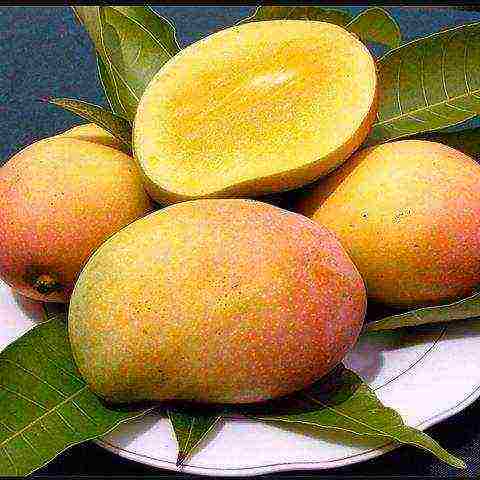
Alphonso mango is one of the most widespread varieties in the world and is highly regarded for its taste.
- The Kesar variety has rather inconspicuous fruits - round, small (about 150 g), with a dull skin covered with yellowish spots. But the taste is just great, sweet, with a subtle sourness. The pulp is similar in consistency to apricot, very aromatic;
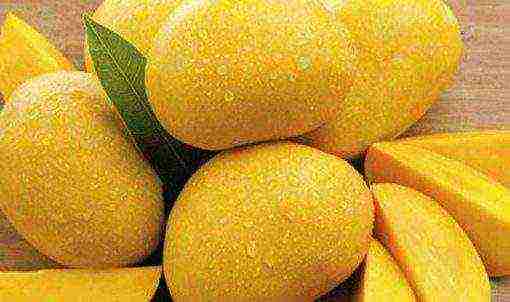
Kesar mango looks not very presentable, but it does not affect the taste in any way.
- Banganapalli has elongated fruits weighing 350-400 g, similar in shape to potatoes. The skin is rather thin, greenish-yellow. The pulp is not too juicy, but sweet and without fibers;

Banganapalli mango has large, potato-shaped fruits.
- Kent is one of the best breeders from the USA, grown mainly in Florida and Miami. It is appreciated not only for its good transportability, long shelf life, high yield and resistance to diseases. Salad green with a reddish blush, the fruits are distinguished by an amazing taste. There are practically no fibers in the pulp. The fruiting period is long, stretching over the whole summer;

The Kent mango is well stored and transported, has a high yield and resistance to diseases.
- The Sindhri variety is mainly found in Pakistan and has become the national symbol of this state. Fruits are irregular in shape, slightly crooked. The pulp is very sweet and soft, with a noticeable honey flavor. The skin is thin, therefore, the fruits are stored for a maximum of 2-3 days;

Sindhri mango is one of the national symbols of Pakistan
- Neelam is one of the most popular varieties in India. Differs in high productivity. Fruits weighing up to 200 g. The seeds are very small. The pulp is juicy, has a pronounced floral aroma;

Neelam mango has small fruits weighing up to 200 g
- Gulab Khas has medium-sized fruits (180-200 g). The pulp of an unusual reddish shade with a scent of roses. The skin is pale yellow. In Southeast Asia, desserts are most often prepared from this mango;
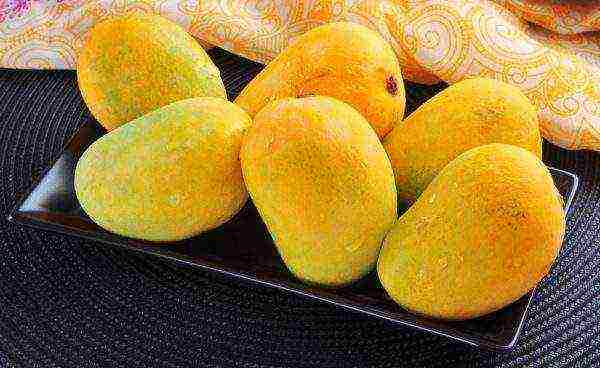
The mango variety Gulab Khas is most often used in the homeland for making desserts.
- Kaen Oan has elongated, narrow fruits that grow in clusters. The skin is thin, orange-pink. The average weight of mango is 250 g. The taste is moderately sweet, not sugary, the pulp is quite dense. Unlike most varieties, it ripens in mid or late autumn;

Kaen Oan mangoes grow in clusters and ripen in mid to late autumn.
- Pimsean is a rather rare variety, even at home. The fruits are almost regular, rounded, and appear to be swollen. The skin is deep green with vague pinkish spots. The pulp is dark orange, very juicy and sweet. The average weight of the fruit is 400–450 g;
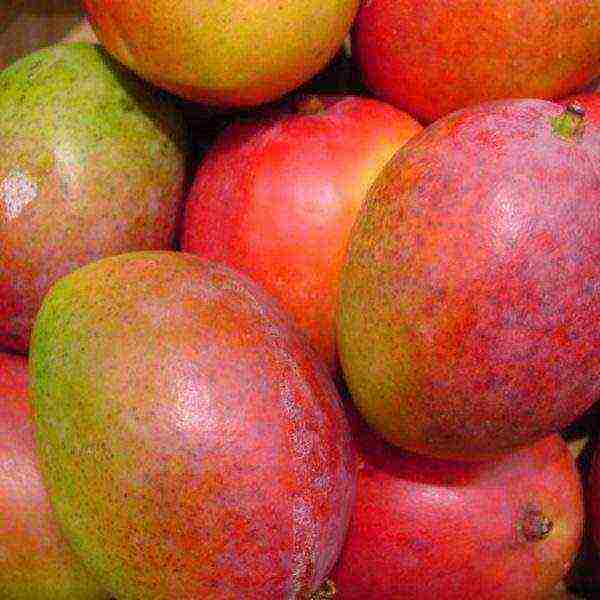
Pimsean mangoes have a sweet, dark orange flesh.
- The Gaew Lek variety has fruits weighing no more than 100 g, but this does not affect the taste in any way. The skin is soft, lime-colored. The pulp is pale yellow. The variety is especially popular in Thailand;
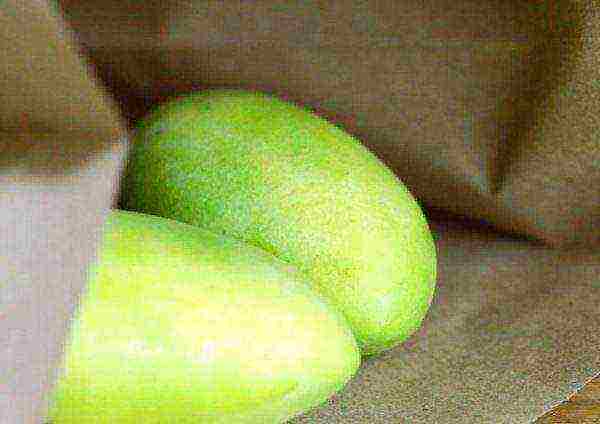
Gaew Lek mango has rather small, but very tasty fruits.
- Keo Sa Woei. Fruits are dark green in color, with a yellow spot at the base. The pulp is bright orange, very soft. The skin is thin, because they are practically not stored, they can even ferment right on the tree;

Keo Sa Woei mangoes keep even ripe fruits green.
- Nam Doc Mai is one of the most common mango varieties that successfully take root and bear fruit not only in the tropics. Fruits are elongated, tapering to the base, weight varies greatly (150–600 g). Ripe mangoes are very sweet, but unripe mangoes are also eaten - they also have a pleasant sweet and sour taste. The skin is bright yellow;
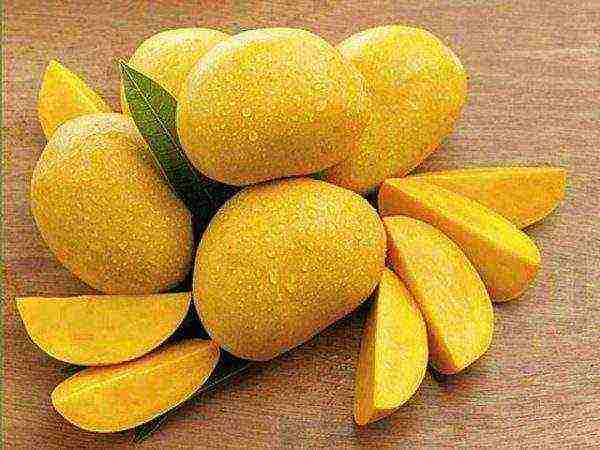
Nam Doc Mai mangoes are grown not only in the tropics, but also in regions with a less suitable climate for crops.
- Nang Klang Wan has elongated fruits and a greenish-yellow skin. Flesh with pronounced fibers, sourish;
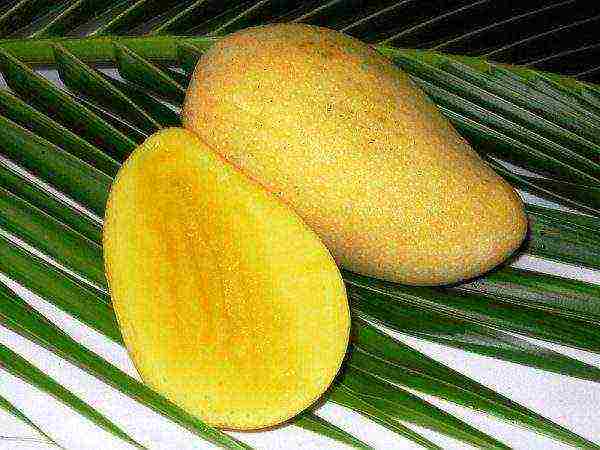
Nang Klang Wan mango tastes dramatically different from most other varieties.
- Chok Anan is one of the favorite varieties in Thailand. The fruit is similar in shape to a comma or cashew nut. The skin is pale yellow, the flesh is the same color with a noticeable honey flavor. At home, it brings crops twice a year;
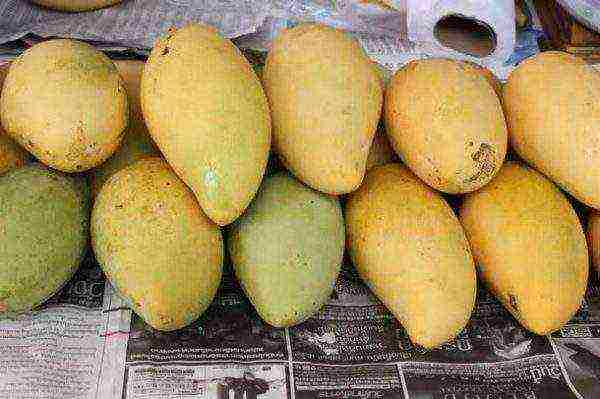
Chok Anan mango fruit has a noticeable honey flavor
- Brahm Kai Mia. The average fruit weight is 200–250 g. The skin is dark green. The pulp is slightly crispy, yellow, with a pronounced sourness. The taste is very pleasant, refreshing;
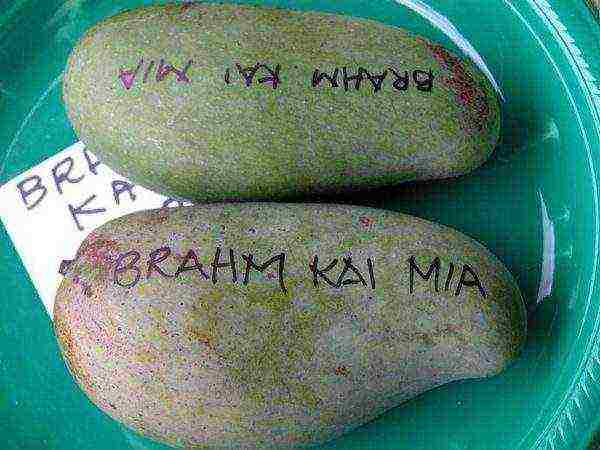
Brahm Kai Mia mangoes have a crispy flesh with a pronounced sourness.
- Kyo Savoy has large fruits (300-500 g) of almost regular oval shape. The skin is greenish-yellow with pink spots. The pulp is firm, but very juicy and sweet, not fibrous, with a lemon aroma. Fruits tolerate transportation well, can be stored for a long time;
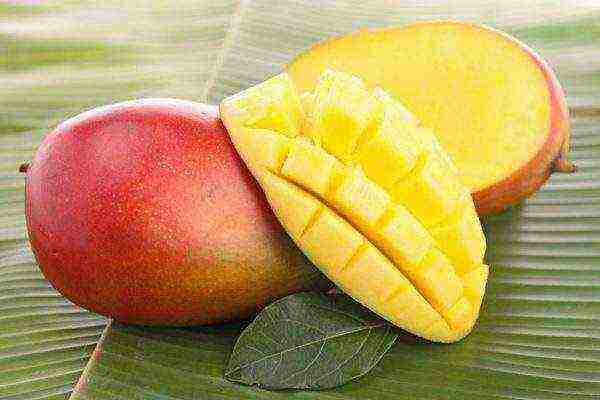
The Kyo Savoy mango is prized for its good keeping quality and transportability.
- Bayley's Marvel is one of the most frost-resistant varieties, it can be grown even in Russia, in regions with a subtropical climate. The tree is distinguished by its growth rate, the crown is symmetrical, round. Fruits weighing up to 300 g, bright yellow with a pinkish-orange "blush". The pulp is not fibrous, very juicy, sweet, slightly tart;
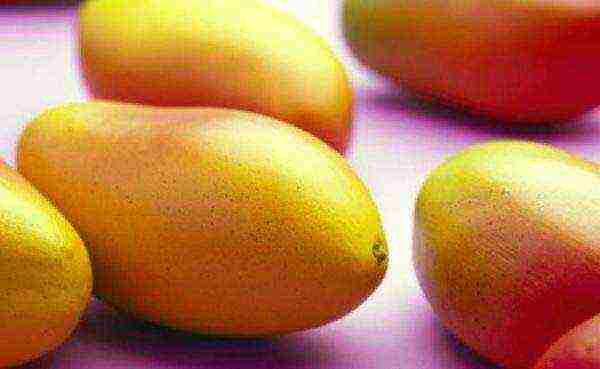
Bayley's Marvel mango is a variety that successfully takes root and bears fruit even in Russia
- Beverly is one of the novelties of the selection, but it is already considered almost a standard in terms of taste. Fruits weighing 200-250 g, greenish skin with a yellow spot at the base. Its appearance indicates that the mango is fully ripe. The pulp is dark orange. Productivity is high, fruiting stretches for several months;
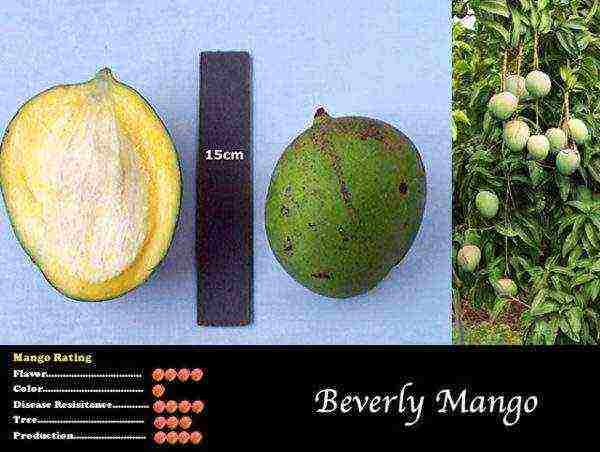
The Beverly mango is one of the latest and most successful achievements of breeders.
- cultivar Carrie. The tree is short, with a very dense crown. The skin is yellow, thin. The pulp is very aromatic, completely fiber-free. The average weight of the fruit is 180-200 g;
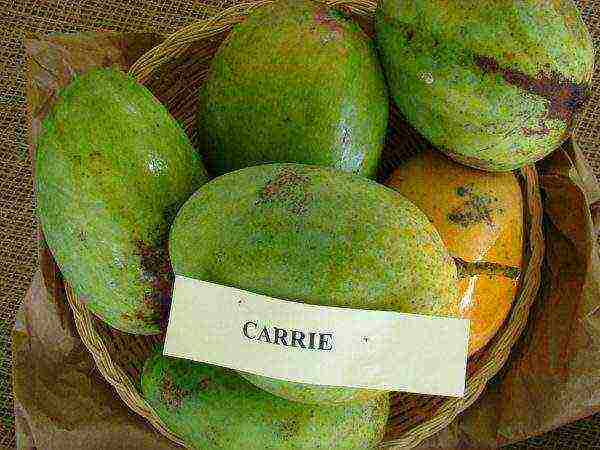
Carrie mango stands out for its unusual thickening of the tree crown
- Haden is an old well-deserved variety, developed in Florida in the early twentieth century. The fruits are large (about 400 g), apricot-colored with reddish spots. The pulp is bright orange, firm, but juicy, very aromatic. There are few fibers, mainly near the bone;
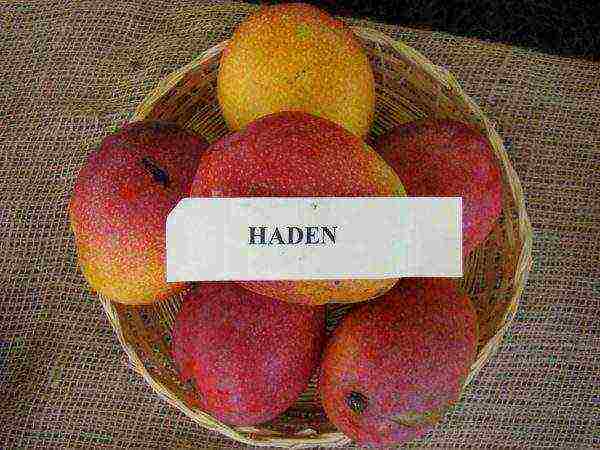
Haden mango is one of the oldest varieties still cultivated on an industrial scale.
- Julie is one of the most popular dwarf varieties. The height of the tree, even under optimal conditions, does not exceed 2–3 m. Fruits weighing 200–250 g, slightly flattened, greenish-yellow with pinkish spots. The pulp is tender as cream, very tasty. Yields are improved if cross-pollination is possible;
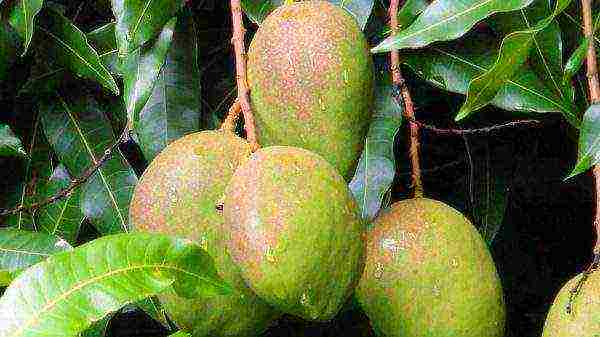
Julie mango is a dwarf variety well suited for home cultivation
- Mallika is an Indian variety that is very popular with industrial growers of mangoes. Fruits of bright yellow color weighing up to 300 g. The pulp is firm, but juicy and aromatic, with a honey flavor, orange. The tree is compact enough, suitable for growing at home;
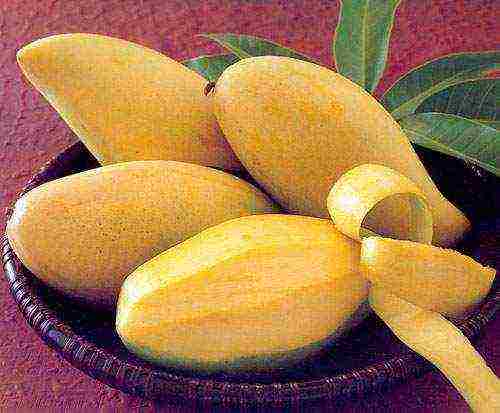
Mallika mango has a very juicy and aromatic pulp with a pronounced honey flavor.
- Springfels variety. The tree is not tall, moreover, the growth rate does not differ. Fruits are greenish with yellow and pink spots. The pulp tastes like pineapple. The average weight of a mango is 150-180 g.
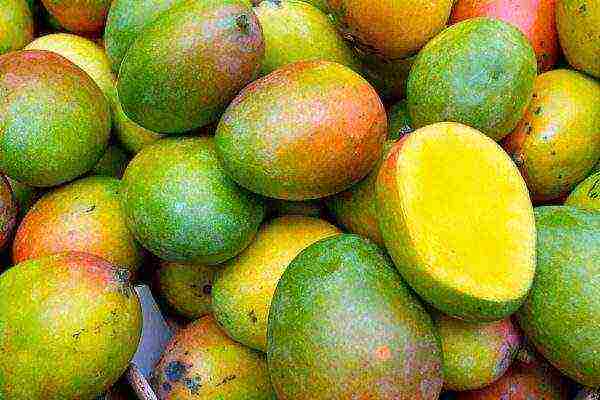
Springfels mango has a compact tree and is slow growing
How to plant a mango correctly
In the homeland of mango, the temperature practically does not change throughout the year. The climate is also characterized by high humidity. This must be taken into account when choosing a place for a plant. And also the fact that he needs a long daylight hours. In most of the territory of Russia, natural light will not be enough, so you will have to use ordinary fluorescent or special phytolamps, extending the daylight hours to 14-16 hours.
Mangoes are placed by a window facing south or southeast. If the tree was purchased from a special nursery or store, you do not need to replant it immediately. It is better to give him 2-3 weeks to adapt to new conditions.
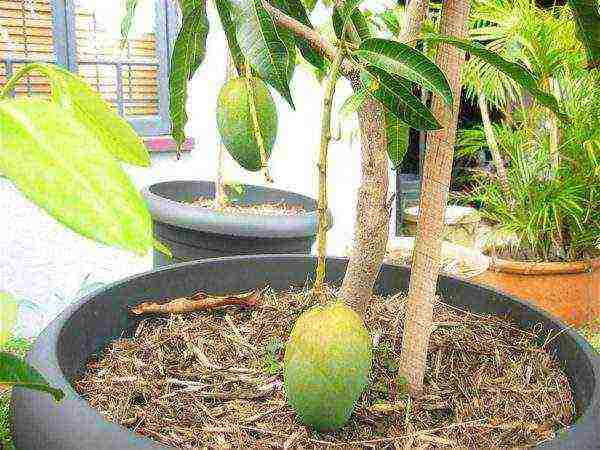
When growing mango at home, you need to provide the plant with daylight hours at 14-16 hours
The soil
It does not impose special requirements on the quality of the soil, but it is desirable that it be light and loose. The only prerequisite is that the substrate must be acidic enough. You can buy special soil for azaleas, gardenias, hydrangeas in the store, or annually add peat to the soil, add a few drops of apple cider vinegar or citric acid crystals to the water for irrigation.

The soil for growing mangoes should be acidic (pH 4.0-5.5), any store-bought substrate will do for plants that prefer a similar soil
Experienced growers mix the soil on their own. The easiest option is peat crumb, ordinary garden soil and coarse river sand (1: 2: 1). The latter can be replaced with any baking powder - perlite, vermiculite, dried sphagnum moss or coconut fiber.
The root system of the mango is powerful and developed. In nature, its roots go into the soil at 6–10 m. Therefore, you need a large enough pot or even a tub. It is desirable that the container be ceramic or wooden - natural materials allow air to pass through. It's good if the pot has a thick bottom, otherwise the mango roots may just punch through it.
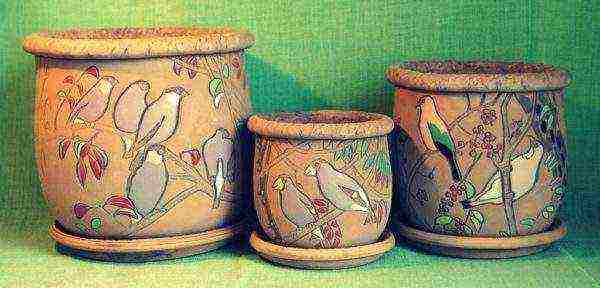
The mango tree has a strong root system, so the plant pot must be massive and stable, have a thick bottom
Planting and transplanting a plant
The best time to plant and transplant mangoes is late spring or early summer. There is no need to carry out the procedure too often: for an adult plant, once every 3-4 years is enough. When it is no longer physically possible to transplant a tree due to its size, they are limited to removing the top 5-7 cm of soil and replacing it with fresh substrate.
There is nothing complicated in the transplant itself:
- Mango is removed from the container along with a clod of earth. This will be easier if you water it abundantly in about half an hour.
- The new pot is filled with earth by about a third, not forgetting the drainage layer at the bottom.
- The tree is transferred to another container and covered with soil. Its base should be flush with the soil surface or slightly below. It is not necessary to tamp the soil strongly; mango prefers a loose substrate.
- Then the plant is moderately watered and transferred to partial shade for 3-5 days or otherwise protected from direct sunlight.
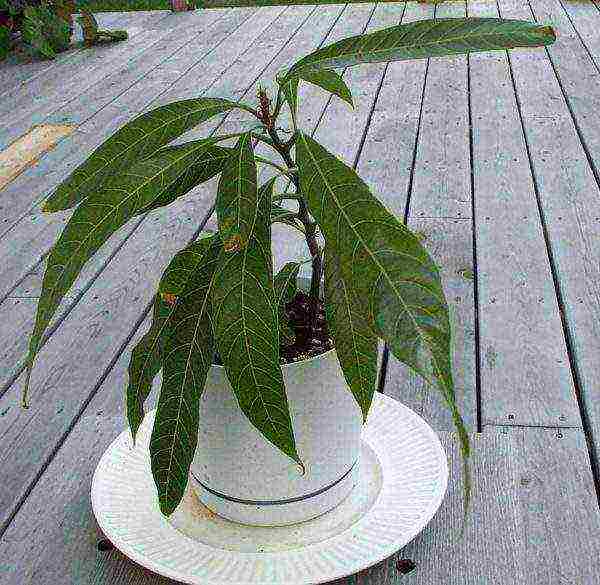
A mango tree is transplanted as it grows; adult plants only change the topsoil
Mango Care Tips
If the mangoes are provided with optimal conditions, the plant does not need particularly careful care. The most important thing for him is that there is enough light. With its deficiency, the tree weakens, its immunity decreases, it becomes more susceptible to attacks of pathogens and pests.
Watering
Mango is a moisture-loving plant, but if you overdo it with watering, the roots can rot. Therefore, the soil must be constantly kept in a slightly moist state. Young trees under the age of five are especially sensitive to drying out. They immediately numb and the leaves begin to fall off.
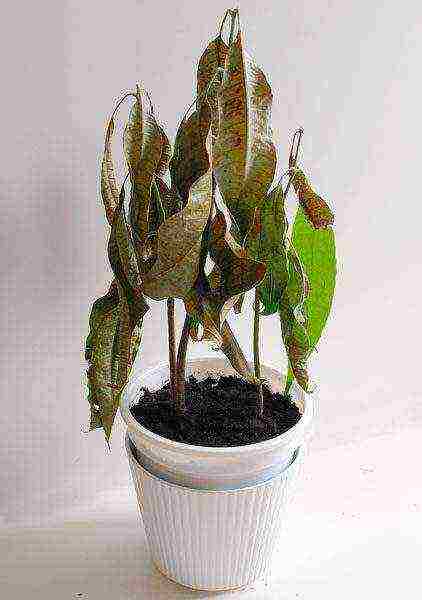
If the young mango tree begins to dry and the leaves begin to fall off, the number of waterings should be increased
Immediately after flowering, if fruits have set, watering is reduced to the minimum necessary. In the previous mode, it resumes only after the harvest. Usually once every 3-5 days is enough, but it depends on how warm it is outside. In extreme heat, daily watering may also be required.
Water is used only at room temperature and settled for at least a day. Mango is sprayed with it every day or at least once every 2-3 days. The plant prefers high (70% or more) air humidity, as in its native tropics. Special devices-humidifiers, wet moss, expanded clay, coconut fiber, placed in the pan of the pot, as well as containers with cool water or a company of other plants placed around the room, will help to provide it.
Top dressing
Mango needs fertilizers without fail, but you should not be zealous with them. Their excess in the soil provokes its salinization, which, in turn, inhibits the development of the tree.
You can use both mineral and organic fertilizers. In the spring, before flowering, it is advisable to water the tree every 12-15 days with a solution of complex fertilizer for citrus or palm trees or vermicompost. They contain enough nitrogen, which stimulates plants to actively form green mass.
After flowering, it is better to use organic fertilizers at the same frequency. An infusion of manure, bird droppings, nettle leaves or dandelion is well suited. It is prepared for 3-5 days in a container with a tightly closed lid, before use, it is diluted with water in a ratio of 1:10 or 1:15 (if it is droppings). In the middle of autumn, feeding is stopped.
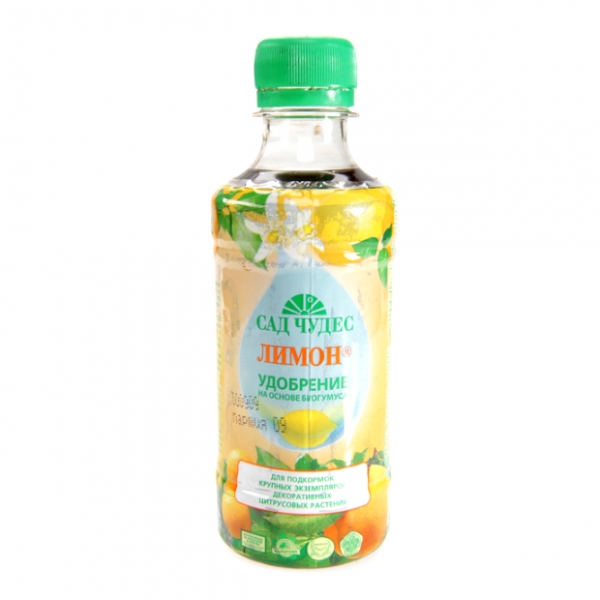
The mango tree can be fed with any citrus fertilizer.
In addition to nitrogen, phosphorus and potassium, mango also needs other trace elements. Therefore, 2-3 times per season, its leaves are sprayed with a solution of boric acid, copper sulfate and zinc sulfate (1-2 g per liter of water).
Tree pruning
The mango tree in nature differs in size. Therefore, pruning for it is an absolutely necessary procedure, otherwise it simply will not fit into most modern apartments. As a rule, its height is limited to 1.5–2 m, but experienced flower growers even manage to form bonsai from mango.

Mangoes at home need to be pruned, experienced growers even form bonsai from the tree
The crown of a mango, as a rule, is not too thickened, it takes a beautiful symmetrical shape with almost no effort on the part of the grower. You just need to remember that the fruits ripen at the ends of the branches, and cut off thin, deformed, growing down or clearly knocked out of the contours of the selected configuration of the shoots. They are cut almost to the point of growth, leaving "hemp" 2–3 cm. At the same time, this will help thin out the crown if it is too dense near the trunk. Mango pruning tolerates well, recovers quickly after it. The best time for the procedure is autumn, 2-3 weeks after the harvest (if any).
Culture propagation methods
Growing a new mango is no big deal. As a rule, seeds are used for this. Such plants, most likely, will not yield a crop, especially if these are varietal mangoes, bred by selection, but then it will be quite possible to graft a stalk or bud from a fruiting tree on them.
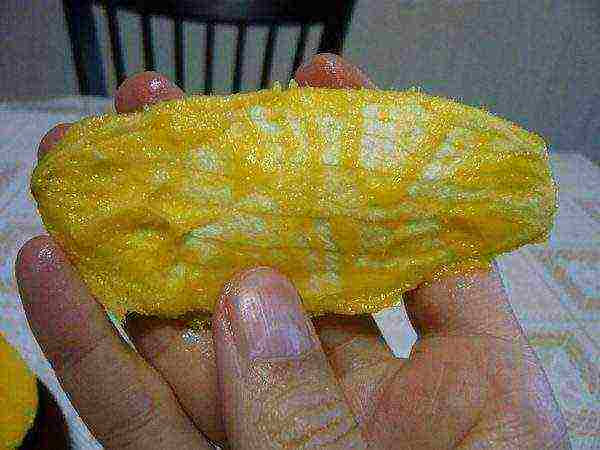
Mango seeds are best taken from large, slightly overripe fruits.
Growing mango from seeds
Harvesting from seed-grown mangoes will take a long time. As practice shows, the fruits on such trees, if they ripen, are small and not too tasty.
Seeds are best taken from large ripe (preferably even slightly overripe) fruits. It is advisable that the fruit be plucked from the tree, and not bought in a store. The seeds are thoroughly cleaned of pulp and inspected for cracks and other damage. If none were found, the seed must be planted within 2-3 days until the seed has dried.
When this is not possible, they must be placed in a container filled with moist peat, sand or sawdust. In this form, they remain viable for up to two months. The best time to plant seeds is early summer.
Then they act like this:
- The seeds are soaked for several hours in a pale pink solution of potassium permanganate or any fungicide of biological origin for disinfection. Then, with a sharp knife, the outer shell is opened and the core is removed. If the fruit was ripe enough, this will be quite easy. In the process, you need to be as careful as possible so as not to damage the seed. The embryos should be white and smooth. Only in this case can one hope that they will sprout.
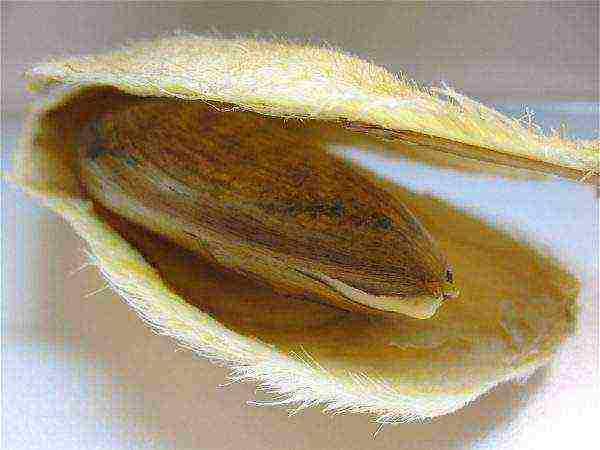
Open the mango seed with a sharp knife, very carefully so as not to damage the seed
- The seeds are placed in moist sphagnum moss or coconut fiber for germination. You can also use water at room temperature, but you will have to change it 2-3 times a day. The process usually takes 15-25 days. Some growers do not recommend removing the outer shell from the seed. But practice shows that this does not particularly affect germination.
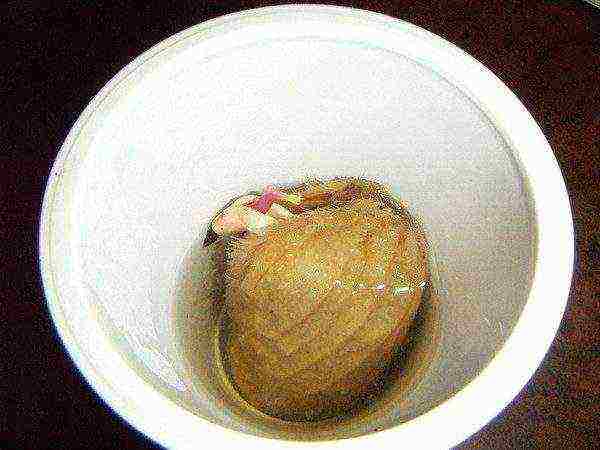
Germinate the mango seed in room temperature water or in a suitable moist substrate
- Sprouted seeds are planted in small but deep pots filled with a mixture of fertile turf, humus and sand (2: 2: 1). A drainage layer is required at the bottom. The seeds must be completely covered with soil. The optimum temperature for them is 22–25 ° C. It also requires a day of light with a duration of at least 12-14 hours. To create a greenhouse effect, the containers are covered with glass or polyethylene, removing it daily for 5-10 minutes for ventilation.
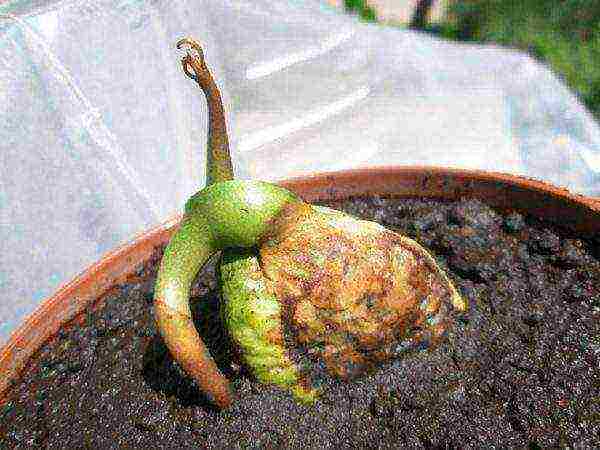
As soon as the mango seeds germinate, the greenhouse shelter is removed.
- Seedlings appear in 6-8 weeks. In the first six months, seedlings develop slowly, but then they begin to very actively add in growth. Further care for them consists in regular watering (the soil should always be slightly moist) and the introduction of fertilizers, mainly nitrogen-containing.
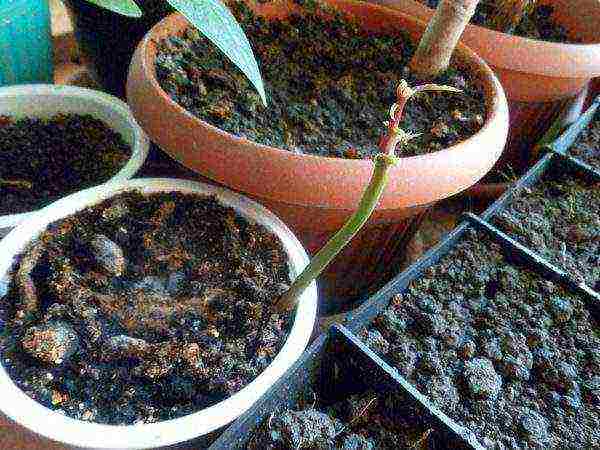
In the first six months, mango seedlings do not show a high growth rate, but then they begin to actively develop
- Once every 2-3 weeks, mangoes are watered with a 2-3% solution of carbamide, ammonium sulfate or ammonium nitrate. They need to be alternated with potassium humate, biohumus, Epin. Growing trees are transplanted annually using the soil of the same composition.
Video: bone mango
Grafting mango
Grafting is a method of reproduction that guarantees the preservation of all the varietal characteristics of the fruit, characteristic of the donor plant. Grafted mangoes begin to bear fruit in 2-3 years. Until that time, it is better to remove the flowers on them so that the tree can form a developed crown.
The grafting is carried out in the second year of life, when the trunks of mango seedlings grown from seeds reach approximately the diameter of a pencil. The best time for the procedure is mid to late summer.
Inoculation by cuttings
It is possible to inoculate both a cutting (the tip of the shoot 10-15 cm long), and a separate growth bud (the so-called budding). In the first case, the top of the stock and the base of the cutting are cut at an angle, the cuts are aligned and the entire structure is fixed with adhesive plaster, electrical tape or a special grafting tape. It is also possible to insert a rootstock cutting into the scion split.
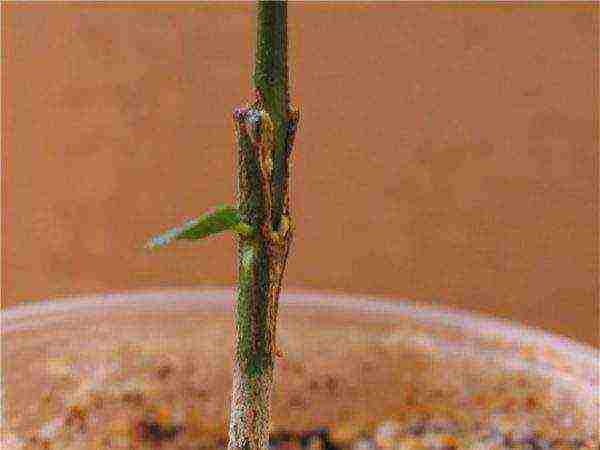
Cuttings from fruiting mango trees are grafted onto seedlings grown from seed
Budding
For budding, you will need a growth bud cut from a fruiting tree along with a “shield” of surrounding tissues about 2 mm thick and 1–2 cm in diameter. Cut it off with a disinfected scalpel or razor blade, trying to touch it as little as possible in the process. Then the resulting "shield" is inserted into the X- or T-shaped incision on the bark of the rootstock seedling, wrapping the grafting site with polyethylene so that the bud itself remains outside.
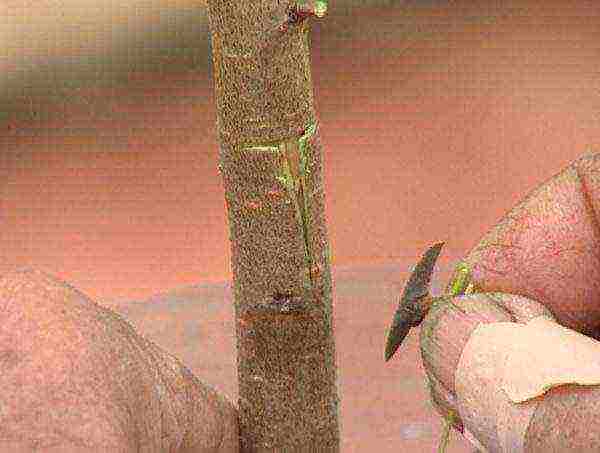
For budding, take a growth bud from a fruiting tree, cut off together with a shield of surrounding tissues with a thickness of about 2 mm
The grafted seedling is covered with a plastic bag, having made several holes in it for ventilation, and transferred to the brightest and warmest place in the apartment. Leaves and shoots below the grafting site are removed only when it becomes clear that the procedure was successful.
Diseases, pests and control of them
Mango, like other fruit plants, can be susceptible to disease and pest attacks.
Mango diseases
Mango does not have any specific diseases brought from their historical homeland, but the plant can be affected by a number of fungal diseases.
Anthracnose
Most often, the fungus infects plants with weakened immunity, penetrating into tissues through the slightest mechanical damage. On the leaves there are rapidly growing spots of brick color with a yellowish border, on the trunk and shoots - depressed brownish ulcers with a purple rim, gradually changing color to brown. At low humidity, their surface cracks, at high humidity it turns black and rots.

To combat anthracnose, as well as with other fungal diseases, copper-containing preparations are used - fungicides
For prevention, Fitosporin-M, Trichodermin, Gamair are added to the water for irrigation once a month. The soil is dusted with crushed chalk or activated carbon. Having found characteristic symptoms, any fungicides are used - Kuprozan, Oksikhom, Previkur, Skor, Acrobat-MC and so on. 2-3 treatments with an interval of 15-18 days should be enough.
Bacteriosis
The edges of the leaves darken, the surface wrinkles. They turn black, but do not fall off. Dark brown rings are visible on the cut of the shoots.

Plant leaves affected by bacteriosis darken and shrivel
For prophylaxis, seeds are etched in a solution of Planriz, Fitolavin, Agata-25K for 10-15 minutes before planting. Having found a disease, you need to immediately cut off all even minimally affected leaves and shoots, capturing 5-7 cm of healthy-looking tissue. Sections are disinfected with a 2% solution of copper sulfate. Water for irrigation is replaced for a month with a pale pink solution of potassium permanganate. Alirin-B, Trichodermina granules are added to the soil.
Powdery mildew
The leaves are covered with a layer of grayish-white bloom, similar to scattered flour. Gradually, it darkens and thickens, drops of a cloudy liquid begin to ooze from the affected tissues. Shoots are deformed and thickened. Typically, the infection spreads from the lowest leaves. Fruits may also suffer - they crack, rot.
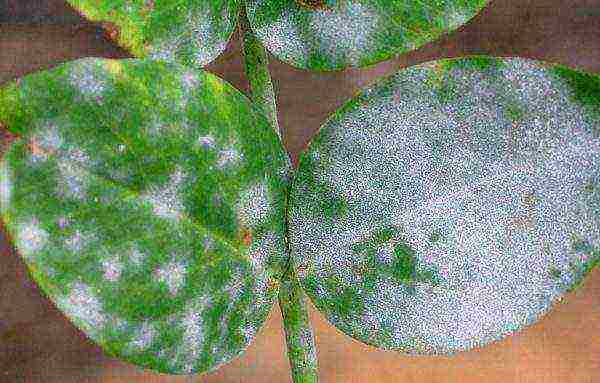
Powdery mildew seems to be a harmless bloom that can be easily erased, but in fact it is a dangerous disease that can affect not only leaves, but also fruits.
For prophylaxis, mangoes are sprayed every 2-3 weeks with a solution of any fungicide of biological origin (Planriz, Fitosporin-M, Alirin-B). You can also use folk remedies - an infusion of wood ash, a solution of soda ash, kefir diluted with water or serum with the addition of iodine (10 drops per 10 liters). To combat powdery mildew, Bayleton, Tiovit-Jet, Topaz, Topsin-M preparations are used.
Mango pests
In addition to fungal diseases, pests that feed on plant juices pose a danger to mangoes.
Spider mite
The tops of the shoots, young leaves, inflorescences are braided with thin translucent threads, resembling a cobweb. Multiple small beige dots appear on them, gradually the affected tissues become discolored and dry.
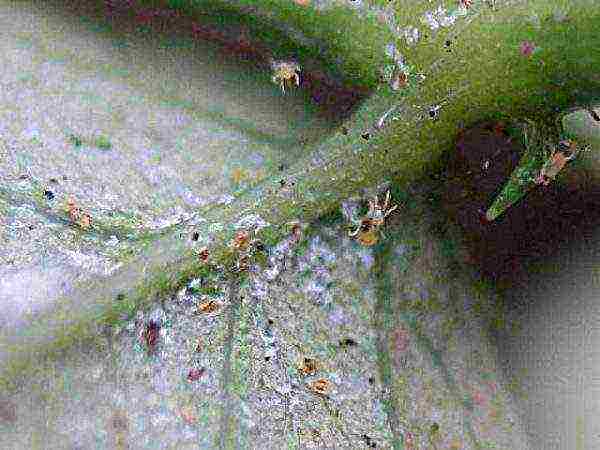
A spider mite is not an insect, therefore, special preparations are used to combat it - acaricides
Since the spread of pests is facilitated by heat and high humidity, if the mites have not yet had time to breed, you can get rid of them by spraying the tree and the surrounding air with clean water every day. Folk remedies (infusion of onion and garlic gruel, decoction of cyclamen tubers) can only be used for prevention.
To combat the pest, special preparations are used - acaricides (Apollo, Neoron, Omayt, Vertimek). It will take 3-4 treatments, and each time the product needs to be changed. The pest quickly develops immunity. The intervals between procedures (5-12 days) depend on the weather outside. The hotter it is, the more often you need to spray the mango.
Shield
On the inside of the leaves and on the shoots, small brownish or beige oval outgrowths appear. Gradually, they swell, the surrounding tissues acquire a reddish-yellow tint. In especially severe cases, the soil in the pot turns black.

It is useless to fight the scabbard with folk remedies - the pest is reliably protected by a strong shell
Visible scale insects are removed manually, after having lubricated their shells with kerosene, turpentine, and machine oil. Then they arrange a shower for the tree and treat it with Aktellik, Fosbecid, Fufanon. Folk remedies against the scale insect are ineffective - the pest is reliably protected by a strong shell. For prevention, mango leaves are wiped once a week with a soft cloth dipped in vodka, sprayed with infusion of onions, garlic, hot red pepper.
Aphid
Small insects of yellow-green or black-brown color stick to the tops of shoots, young leaves, buds. At the same time, the appearance of a transparent sticky coating is noted. Aphids feed on plant sap, the affected tissues turn yellow, the leaves dry and fall off.
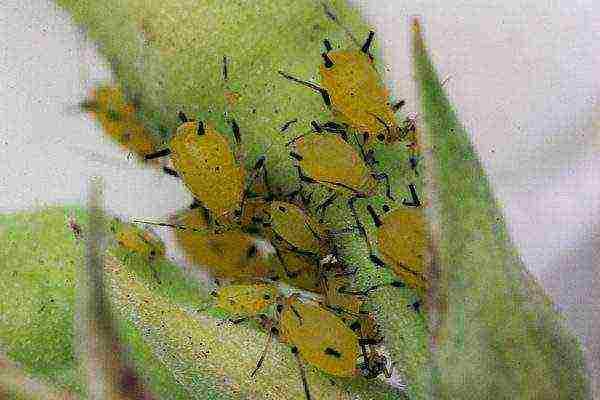
Aphids are one of the most omnivorous pests of indoor plants, with mango leaves, despite the poisonous juice, they also do not disdain
Effective prevention of aphids - infusions of any herbs with a pungent odor. As raw materials, you can use wormwood, tansy, tomato and potato tops, calendula, lavender, as well as onions, garlic, lemon peel, tobacco and so on. They will also help get rid of aphids if they have not yet multiplied en masse. In this case, the frequency of treatments will have to be increased from once a week to 3-4 times a day. In the absence of an effect, any general action insecticides are used - Inta-Vir, Mospilan, Tanrek, Iskra-Bio, Konfidor-Maxi and so on.
Thrips
The front side of the sheet is covered with thin silvery strokes, the wrong side is covered with blurry yellowish spots. You can also see small black "sticks" - these are the pests themselves.
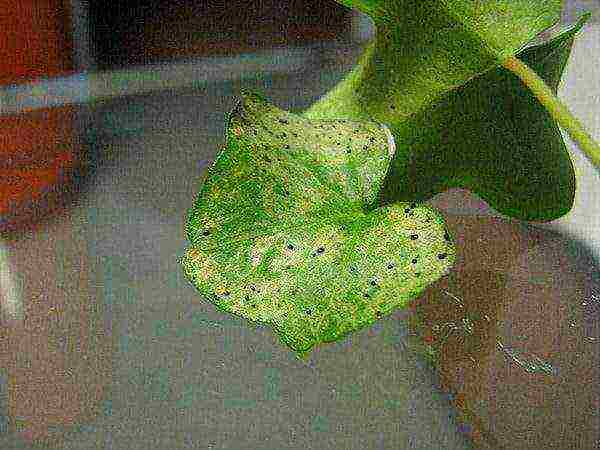
To combat thrips, drugs such as Bankol, Aktaru, Tanrek, Fitoverm are used.
For prevention, folk remedies are used - an infusion of chamomile, calendula, tobacco leaves. To get rid of thrips, use Bankol, Aktara, Tanrek, Fitoverm.
Orange and lemon trees on the windowsill have long been a surprise. Therefore, amateur flower growers successfully “domesticate” all new exotic cultures. Among them is mango, the cultivation of which is not particularly difficult. If you first study all the requirements that it places on the habitat, you can even get a crop.
27 years old, higher education in law, broad outlook and interest in a variety of topics.
Mango is a wonderful exotic plant with aromatic and tasty fruits. It is grown in India, Thailand, Pakistan, Mexico, USA, Spain and Australia. You can meet it not only on plantations and in gardens, the plant is also grown in containers by amateur flower growers. It is quite possible to get a mango tree at home by planting a seed of a ripe fruit. At the same time, the process is simple, even a novice florist can handle planting. That's just to achieve fruiting mango in the room is unrealistic, he needs special conditions and pollinators.
Preparing mango seeds for planting
To prepare a mango seed for planting, you will need the following:
- ripe fruit;
- dull knife;
- paper towel;
- a plastic bag with a zip fastener;
- plastic container with a lid.
Step-by-step master class on preparing mango seeds for planting
- Pick up the fruit, it should be ripe, regular in shape, without wormholes and damage. Then cut off the pulp, scrape off its remnants from the shells and rinse the pit with water.
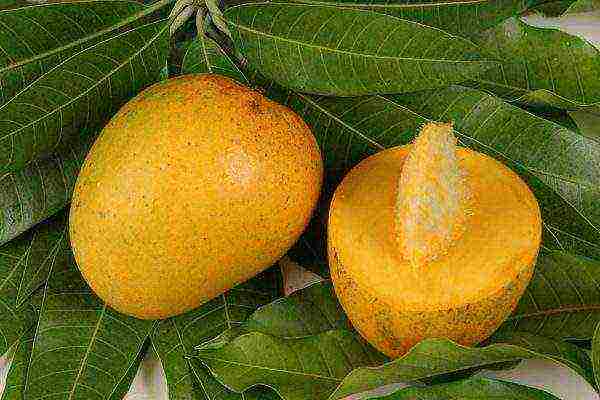
The mango seed is taken from a ripe fruit
- Place the seed in a sunny place where it should dry out within 1–2 days. Flip it over when one side is dry.
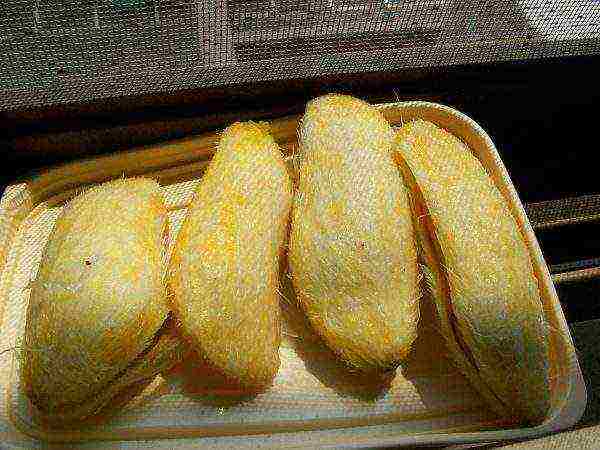
The seed must dry in the sun before extracting the seed.
- Use a blunt knife to carefully cut open the bone from the round tip, taking care not to damage the seed. Break the shell with your hands.
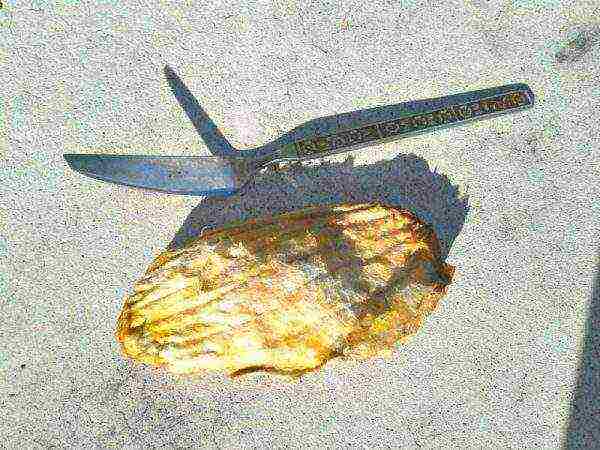
Open the bone with a blunt knife, being careful not to damage the seed
- Detach the bean-like or large bean-like seed from the shell. You do not need to remove the skin from it.

Inside the shell is a seed that looks like a bean
- Wrap the mango seed in a piece of paper towel and dampen it slightly. The material should not be too wet. Otherwise, the seed will simply rot.

Mango seed is germinated in a humid environment by wrapping it in a wet paper towel
- Place the wrapped seed in a zip-fastened plastic bag and close it tightly, then place it inside the plastic food container. It will become your portable mini greenhouse.
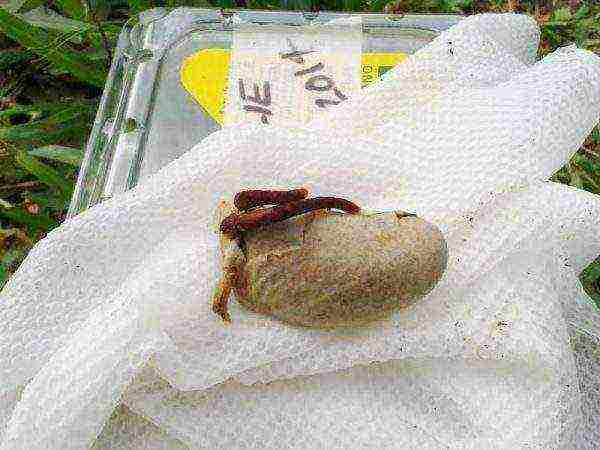
To germinate, wrap the seed in a damp paper towel, place in a bag and place in a plastic container
- Move the seed container to any dark place.
- Check the seed daily to keep it moist, but not wet.
Planting a sprouted mango seed
Mango seedlings are very vulnerable in the early stages, so it is best to plant the seeds right away in a permanent place in the pot.
For the procedure, you will need:
- light and loose soil;
- drainage;
- flower pot;
- scoop;
- water.
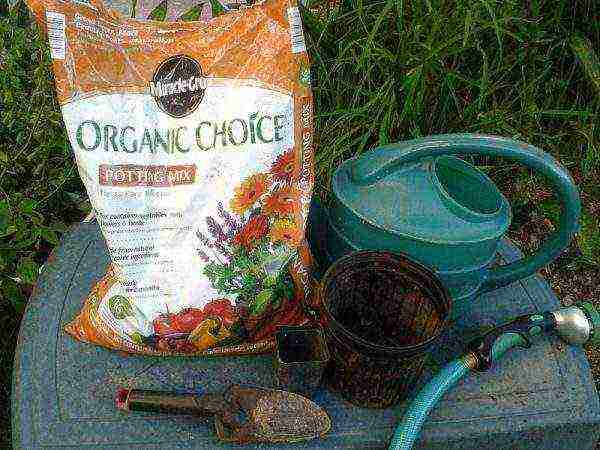
Planting mangoes requires gardening tools, drainage and light, loose soil.
Soil for mango
The substrate for planting the king of fruits (as the mango is popularly called) should be light. You can use a mixture for succulents with the addition of small pebbles or expanded clay or universal soil mixed with sand 2: 1.
Planting stages of sprouted mango seed
- Fill the bottom of the pot with an approximately 5 cm layer of fine gravel or expanded clay drainage.
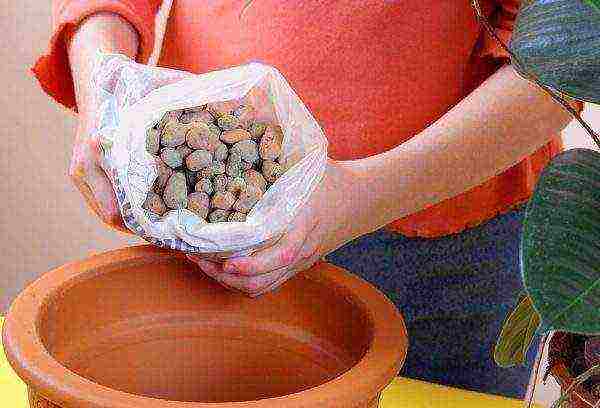
Mango does not tolerate stagnant water, therefore, to drain excess moisture, it is necessary to arrange drainage at the bottom of the pot.
- Fill the pot 2/3 full with soil, moisten it and let the water drain.
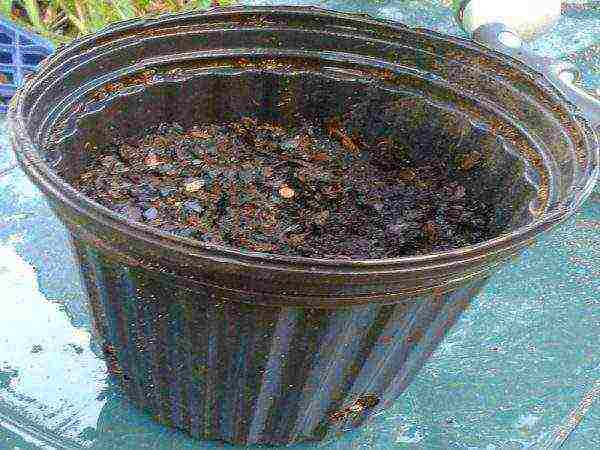
The soil is poured onto 2/3 of the pot
- Place the mango seed flat side down and cover gently with soil. Lightly press down on the soil, being careful not to damage the sprouted seed.
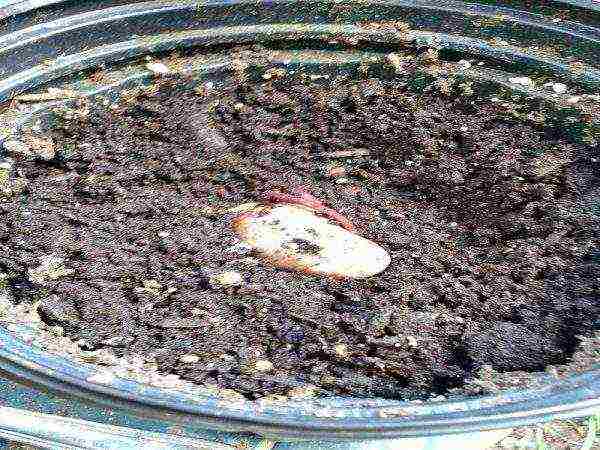
The seed is placed flat on a damp soil surface.
- Cover the planting with a plastic cup and place the pot in a sunny spot.
- Ventilate the makeshift greenhouse periodically and moisten the ground.
- Mango leaves will begin to appear in 2-4 weeks. Some of them will be colored bright green and others purple. Don't be scared, this is just a cultural feature.
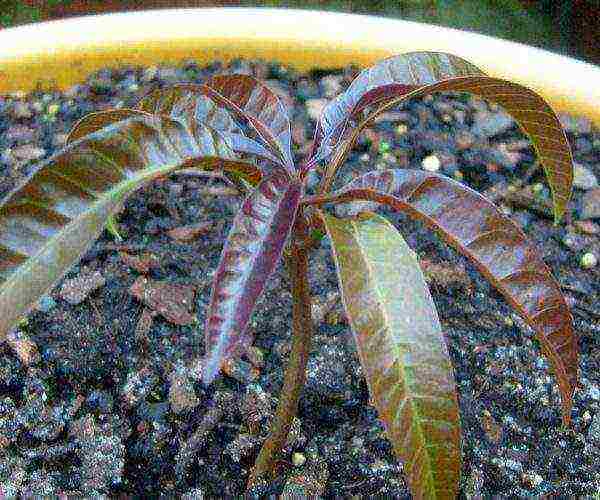
Mango leaves are colored green and purple
- After two months, start gradually accustoming the seedling to the environment by opening the greenhouse. Three months after planting, you can remove the cup and transfer the small plant to an area with direct sunlight.
Video: how to grow a mango from a bone
Mango tree care at home
Germinating a mango seed and producing a seedling is only half the battle. In order for a plant to grow and develop well, it needs to create certain conditions. Mango should be placed on the sunniest windowsill, and in summer, taken out to the balcony. The plant loves direct sunlight and warmth.
Watering and feeding
Indoor mango loves moisture. The plant needs regular watering, which should be carried out as soon as the top layer of soil in the pot dries up. To prevent moisture from evaporating longer, the soil can be mulched with humus or rotted sawdust.
Please note that although mango is moisture-loving, the plant does not tolerate stagnant water.

Three months after planting the seed in the pot, you can get real small trees.
Mangoes need organic feeding. It will be enough to make humus twice a year. To do this, make a small groove along the edge of the pot, pour humus into it and pour ordinary soil on top. This will provide the plant with everything it needs for excellent growth.
Mango crown formation
Mango responds very well to pruning and quickly regenerates its crown. The procedure is carried out when the mango tree grown in the room reaches 1.5 m in height.Pruning is done 1–2 times a year to maintain a beautiful shape and regulate the size of the plant.
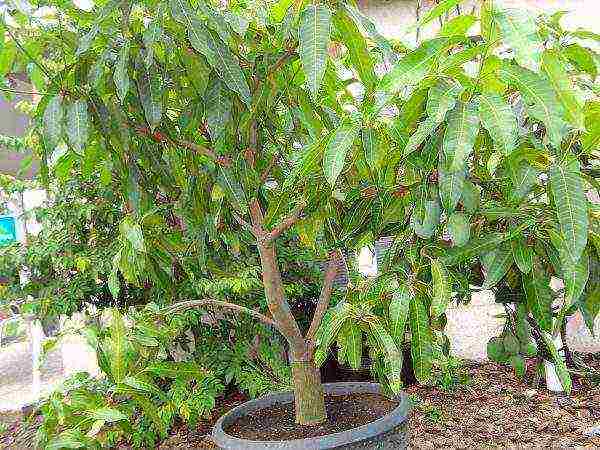
Mango at home has an attractive appearance.
There are no special rules for the procedure. Cut out all the branches that thicken the crown, and shorten the central one to the desired size. You can also give the crown of a mango the desired look, forming it in the form of a ball, pyramid or a picturesque spreading bush.
Video: how to grow a mango tree at home
When growing mango at home, do not expect flowering and fruiting from it. Even if it is possible to provide all the necessary conditions for a tropical plant, to provide it with a warm, humid and sunny place, the mango will not be able to develop the powerful root system characteristic of the culture. But even if you cannot get tasty fruits, mango will become a wonderful decoration at home, the plant, exotic for our latitudes, has a very attractive look.
I am fond of many things. Handicraft, gardening, floriculture and cooking are just a few of my hobbies. I am constantly discovering something new and learning something interesting. I am ready to share all my knowledge with my readers.
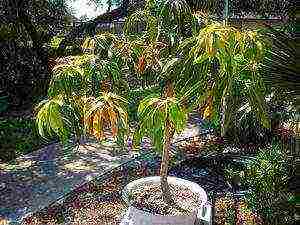 Winter imposes certain restrictions on a person, which also apply to the range of products available to us. First of all, we are deprived of the opportunity to provide our body with the necessary amount of vitamins, since most of the fruits do not grow in winter.
Winter imposes certain restrictions on a person, which also apply to the range of products available to us. First of all, we are deprived of the opportunity to provide our body with the necessary amount of vitamins, since most of the fruits do not grow in winter.
Many people solve this problem by including citrus fruits in their diet. However, in order not to experience vitamin deficiency, it is not necessary to go to the store for a mango. After all, his can be grown at home... Mango is one of the favorite foods of most people in our country. However, its cultivation in our climate is problematic, since this fruit thrives only in the tropics.
How to grow mango from seed at home?
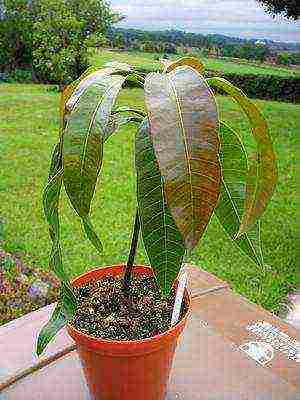 Many people give up the idea of growing mangoes at home because they do not know how to approach this business. However, if you take into account the following simple tips, then you will probably be able to grow a delicious mango in your apartment. The cultivation of this tropical plant begins with planting. To do this, we need a seed, which can be obtained from overripe mango. It is best to use a ripe fruit, since a seed taken from an unripe one may not sprout.
Many people give up the idea of growing mangoes at home because they do not know how to approach this business. However, if you take into account the following simple tips, then you will probably be able to grow a delicious mango in your apartment. The cultivation of this tropical plant begins with planting. To do this, we need a seed, which can be obtained from overripe mango. It is best to use a ripe fruit, since a seed taken from an unripe one may not sprout.
To increase the likelihood that the seed will sprout, it is recommended to plant it as soon as it is removed from the fruit. If this option is not available to you, then you can suggest the following scheme. For her you will need container filled with slightly damp sawdust, in which you want to put the bone. You can also use a bag of water instead of sawdust.
However, do not keep the seed in the bag any longer than necessary. Otherwise, you will achieve the opposite effect, and then a young mango sapling will not peep out of it.
Today, there are several ways to grow mangoes at home. However, anyway the initial stage is landing... To get down to business, you need to acquire the necessary materials.
- in addition to the aforementioned seed, you must have a suitable potting mix and a knife. Particular attention should be paid to the quality of the soil, since the success of growing mango largely depends on it. It is best if you plant the seed in a soil substrate purchased from a specialized flower department;
- you will also have to prepare a container of suitable size in which you will plant the bone. It is best to use a regular glass for these purposes. However, before you fill the container with the substrate, you will have to make a drainage hole in it, if it does not have one;
- you also need to find a lid for the glass.To save yourself from searching, you can adapt a glass of yogurt for these purposes.
How to plant a mango correctly?
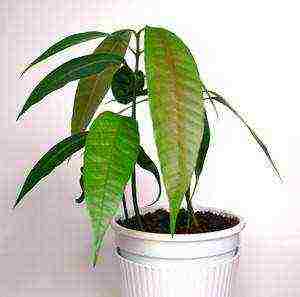 When everything you need for planting is ready, you can start. The first thing you need to do is extract the bone from the fetus.
When everything you need for planting is ready, you can start. The first thing you need to do is extract the bone from the fetus.
It should be borne in mind that without it, it can become an easy prey for pests. To protect it, it is recommended to purchase a special solution, which you can find in any flower shop. Fungicide treatment will scare away harmful parasites from the bone. You will also need water to water regularly.
How to grow mango from seed?
Once you have found all the necessary materials for planting, you can start. We take a seed and start peel it... The easiest way to do this is with a knife. However, you need to be very careful here, since there is a high risk of injury to yourself.
Sowing preparation
The seed must be separated from the shell, since without it, the seed will have an increased chance of successful germination. Peeling a seed is not easy as it takes time. To grow mangoes at home, you need a glass with a lid to help create conditions as close to natural as possible. For mango, it is imperative to create high humidity.
After removing the seed from the shell, it must be treated with a pest control agent. Do not underestimate the importance of this operation, since without processing there is a high probability that pests will not allow the seed to sprout.
- before sowing the seed, you need to determine where the root is, and mark this place so that it is located in the groove with its lower part. It should also be borne in mind that when planting, the mango seed is not completely buried;
- it is recommended to plant it in such a way that 1/4 of the bone remains on the surface;
- after planting the seed in the ground, it must be lightly sprayed with water, and then close the container with a lid. This way you can maintain the greenhouse conditions in the glass, similar to the greenhouse effect;
- the seed should remain under the lid until it sprouts.
Conditions for favorable growth
Mango requires a lot of attention not only during the care process, but also during the planting phase. Otherwise there is a risk of not waiting for its germination... You also need to be careful after the emergence of a sprout from a seed. Mango belongs to whimsical crops, therefore, at this stage of development, it needs to be carefully cared for.
-
 when the mango seedling is strong enough, it must be transplanted into a large pot. Moreover, this operation should be carried out every six months. If this is not done on time, then the growth of the seedling will stop;
when the mango seedling is strong enough, it must be transplanted into a large pot. Moreover, this operation should be carried out every six months. If this is not done on time, then the growth of the seedling will stop; - it must be borne in mind that the tropics are the homeland of mango, therefore it must be grown in a lighted place;
- you need to be careful about watering: it must be carried out at least twice a week. Any delay in watering can negatively affect the development of plants, as a result, it can wither;
- in the summer, in addition to the main activities, you will also have to pay attention to the crown of the plant. We are talking about spraying the leaves, which is carried out several times every day.
Mango itself appreciated not only for its delicious pulp, but is also of interest due to the decorativeness of its flowers. It is no less pleasant to watch how the mango grows. Therefore, while providing the necessary conditions for growth, a beautiful decoration will appear in your apartment.
Mango care at home
You will have to be patient to wait for the first mango flowers to appear, as this will happen. not earlier than after 6 years... You should be aware that the mango tree, which is not always grown from a stone, begins to bear fruit. However, you can rest assured that you will be able to enjoy its beautiful flowers. They will surely please you, because when the time comes, the plant will have flowers of red or yellow color.For this reason, many gardeners also grow the mango tree for ornamental purposes. However, immediately get ready for the fact that growing mango indoors will take a lot of time and effort from you. This tree is very sensitive to growing conditions, so you will have to pay enough attention to it every day.
Financially, caring for a mango tree is not burdensome, it will give you a hassle only because it will take a lot of time to carry out the main activities. If you wish, you can grow a whole greenhouse from mango trees. At a certain stage of development, leaves may change your usual color to reddish... However, there is no need to worry about this. This is the case with all trees. You will have to wait a while, and they will return to their usual shade.
Safety
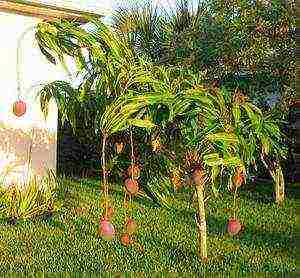 When you decide to grow a mango tree at home, you can rest assured that it will cause allergies for someone in your family. Experience shows that in very rare cases, this plant becomes the culprit for a deterioration in human well-being.
When you decide to grow a mango tree at home, you can rest assured that it will cause allergies for someone in your family. Experience shows that in very rare cases, this plant becomes the culprit for a deterioration in human well-being.
Especially you need to be careful when growing mangoes at home for those people who have small children. They may, out of curiosity, taste the leaves of the plants, however it may be unsafe for health... Otherwise, mango is an excellent houseplant that can add novelty to your interior and create a healthier atmosphere in your home. When choosing a place to grow a mango, it is not recommended to place it in a corner. It will grow very poorly there, and eventually dry out.
Conclusion
Mango belongs to one of the most famous exotic fruits in our country, which everyone must have tasted. But at the same time, in order to enjoy once again the pulp of this fruit, it is not necessary to go to the store. Any owner can taste his own mango. Naturally, here have their own characteristics, since mango is still a tropical fruit, and therefore those who decide to plant it in an apartment will have to take very careful care of the plant. Moreover, care must be taken already at the stage of seed sowing. After all, it depends on whether the seedling can germinate and how strong and healthy a tree will turn out from it.
Mango tree
Growing mango from seed at home
The sprouts of this evergreen tree can be purchased in a special nursery and planted at home. This method is preferable, since the survival rate of the seedling is much higher, it is easier to care for it and there is no likelihood of getting a wild plant. However, if you have a seed left from a ripe fruit, then it is absolutely realistic to germinate it and save money on the purchase, following some simple rules.
How to grow mango at home Ripe mango fruits from the store
Only a fresh bone extracted from a ripe fruit is suitable for planting. Determining the degree of ripeness of a mango is very simple - if the core is easily separated from the pulp, then it is suitable for germination. Rinse it well, then gently scrape off the remaining fruit with a sharp knife. Next, the bone must be split in order to enable the sprouts to break through faster:
- if it gives in easily, then remove the outer dense layer, carefully pull out the contents that look like large beans, and treat it with a fungicide (a special agent that fights against fungi and harmful spores). If there are several embryos, choose the most green and even, it is he who has the most chances of germination.
- if the shell is very hard, then it is better not to try to make a puncture, so as not to injure the seed. In this case, place the seed in a transparent container of room temperature water for several weeks and leave it on a well-lit windowsill.Remember to change the water every two days so that it doesn't stagnate or bloom.
How to grow a mango at home: getting a bone
Then prepare the pot for planting. Since under natural conditions the mango tree grows from 10 to 45 m in height, it is better to initially take a large pot for the plant in order to transplant it as little as possible and injure the roots. Drainage must be laid at the bottom of the pot: fine gravel or special granules - they will not allow water to stagnate and spoil the root system. The soil is suitable for a universal type, the main thing is to maintain a neutral level of acidity.
Germinating mango seeds at home
It is most convenient to check the acidity level with a special device, which can be called a soil Ph meter or a PH meter. There are also disposable paper indicators that change color upon contact with acidic soil after a while (from 1 to 15 minutes, depending on the manufacturer).
Planting can be done in several ways:
- sideways, if you are not sure exactly where is the bottom and where is the top;
- horizontally, if a small sprout has already hatched.
In any case, it cannot be completely sprinkled with earth, it is optimal to leave 1/4 of the bone above the surface and pour abundantly with settled water at room temperature. If the soil settles heavily after watering, just add another small layer.
Ready-to-plant mango seed grain with germ
To create an ideal germination microclimate for mangoes at home, after planting, cover the pot with a bone with a thin glass sheet, cellophane, or a plastic bottle cut in half. Once every 2-3 days, slightly raise the edges of the shelter to ventilate and prevent the bone from rotting.
It is best to place the pot on a southern windowsill, where there is most sunlight. After two to three weeks, the first sprouts will appear and it will be possible to observe how the mango grows at home, then the shelter can be removed from the pot.
Mango tree at home: how to care Mango tree from a stone at home photo
If from the very beginning you took a small container for the mango, then you should postpone the further transplant. It is optimal to do this after the tree grows up a little and gets stronger. It will be possible to finally transplant the mango tree into a permanent container no earlier than in a year. Try to avoid frequent transplants, because each manipulation of this kind is stress for the plant, to which it can react by discarding leaves or even death.
Given the climate in which mangoes grow in their natural environment, it will be necessary to recreate these conditions as much as possible at home. The tree does not tolerate the dryness of the soil and air, therefore, do not forget to water it regularly, as well as maintain a sufficient level of humidity in the room (70-80%). At the same time, do not get carried away by over-spraying the leaves - they are very susceptible to fungi and mold, which can quickly develop and destroy the plant.
As a fertilizer for a mango grown from a seed or seedling at home, biohumus is suitable, as well as nitrogen-containing mixtures used for growing persimmons or citrus fruits. If you planted it in open ground, then 2 times a year do not forget to add organic substances (4-5 liters of water infused with manure or rotten leaves) to the trunk circle for feeding.
The plant desperately needs bright daylight, because the pot with it should be placed on the lightest window sill of the apartment, and in winter an additional light source will not interfere, you can use a fluorescent lamp.
Mango tolerates pruning well - you can shape its crown as you like. If you plan to leave the tree in the room, then after it reaches a meter, start pinching the top pairs of leaves along with the buds.The pruning sites must be treated with garden varnish.
Is it possible to get mango fruits at home How mango grows at home photo
Unfortunately, even if you follow all the instructions exactly, growing a mango from a seed at home will bring you an ornamental tropical plant with graceful leaves, reminiscent of a palm tree. Only grafted specimens can bloom and bear fruit. You can buy them in a botanical garden or nursery, or graft a plant by budding on your own, taking a bud from a fruiting one.
To plant a seed-grown mango tree:
Take a sterile sharp knife, cut off the bud with a piece of bark and wood. In your tree near the ground, make a small T-shaped incision with a sterile tool, gently peel back the edges of the bark and plant the cut kidney there. Wrap the graft with soft tape and wait for it to grow.
Mango can bloom 2 years after vaccination, and if this happens, then after 3 months (100 days) expect the first harvest of sweet, fragrant fruits. The grafted tree needs regular fertilization (it is necessary to water only with nitrogen-containing dressings and mixtures), especially during the period of flowering and ripening of fruits.
Growing mango from a stone at home: video instruction
Outcome
The mango tree is an unusual exotic plant that will not only become an excellent specimen of your collection, but can also bear delicious fruits if you follow some simple rules and instructions when planting and caring for it. And the main condition that must be fulfilled in order to get mango fruits at home is to plant the plant and provide it with high-quality and regular fertilization.
